In this second of three reviews on the Austrian air force, we have a closer look at the air arm’s aerial transport and crew training assets.
Text and photos: Emiel Sloot

Transport
From the re-establishment of the post-WWII armed forces in 1955 up until the turn of the century, the Austrian military air transport capacity was rather limited. It had relied on a number of light transport and liaison aircraft and some helicopters. The latter will be covered in the next episode. For decades, two Short SC.7 Skyvan aircraft that entered service in 1969 were the largest aircraft in the fleet. While air force operations were almost entirely focused over their own territory, the Skyvans also supported the few deployments abroad such as live firing exercises with Saab J35Ö Drakens over Sweden.
Austrian armed forces unit had participated in some international peacekeeping and humanitarian operations since 1960. Following the end of the Cold War, their involvement in such missions increased and expanded to disaster relief. These are all mostly under the flag of the European Union, the OSCE (Organization for Security and Co-operation in Europe) and NATO. Although Austria is no member of the latter, it did join NATO’s Partnership for Peace programme on 10 February 1995. The increase in international operations and commitments also brought more military air traffic abroad. In order not to rely solely on air transport assets of partner nations, it was decided to establish a small airlift capability on their own. Three former Royal Air Force Lockheed C-130K Hercules aircraft – referred to as Hercules C.1 in British service – were acquired on 22 May 2002 in a deal worth €40 million. At a later stage, a fourth example was bought, but this one just acts as spares donor as well as ground-based trainer. The aircraft were delivered with aerial refuelling probes fitted earlier for the RAF. As the Austrian air force did not have a capability to do so, nor its crews were trained for this, these probes were removed at a later stage.
Following crew training at RAF Lyneham, the first C-130K was delivered on 20 March 2003. Another one arrived later that year with the last Hercules joining the fleet in February 2004. Ever since, these have been based at Fliegerhorst Vogler at Linz-Hörsching. Here, the aircraft are operated by the Lufttransportstaffel (Air Transport Squadron). All strategic and operational airlift tasks are planned and coordinated by the Kommando Luftunterstützung (Air Support Command), also located at Fliegerhorst Vogler.
Marshall Aerospace and Defence Group at Cambridge, UK has been responsible for the larger maintenance inspections, and also carried out an upgrade programme assigned in 2012. These modifications included a new autopilot and radio altimeter, software updates to the flight management system and a new standby flight display. Furthermore, the old analogue flight instruments were replaced by modern multifunction LCD displays. The upgrade of the fleet was carried out between 2013 and 2015. A second round of upgrades at Marshall’s was done a few years later. These covered enhancements to couple the GPS landing system sensor unit’s approach capability to the autopilot/flight director system, and some minor changes to the flight displays. Also, a self-protection suite was added. A night vision imaging system had been installed earlier.
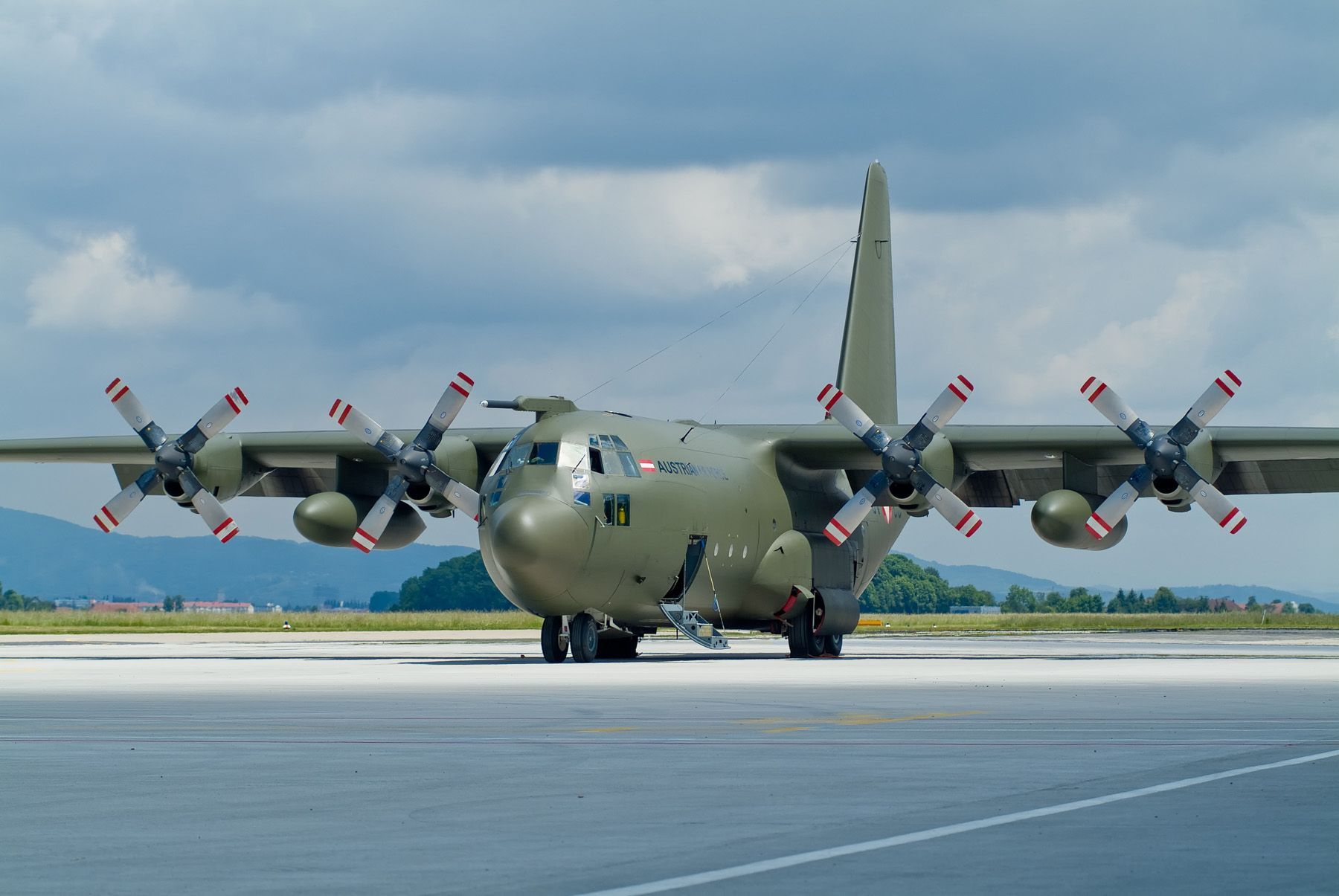
Millenniums for Austria
Modifications aside, the C-130 airframes date back from 1967/68, and although well maintained, age becomes an issue at some point. So in early 2023, Austria launched a tender to replace the three Hercules aircraft by 2030. Quite soon after, on 20 September 2023, the decision to buy the Embraer C-390 Millennium was announced. According to Defence Minister Klaudia Tanner, this aircraft was the only one in the 20-tons capacity category that could accomplish all requirements set by Austria in view of performance, speed, passenger and cargo capacity, and transport of their Pandur armoured personnel carriers. Remarkably, Austria did not want to buy directly from the manufacturer, but partnered with the Netherlands (that selected the C-390 earlier with very similar specifications) under a government-to-government (G2G) agreement. The total order for nine aircraft of which four are destined for Austria was signed at the Farnborough International Airshow on 22 July 2024. The contract includes logistical support, mission equipment, pilot and technician training as well as spare parts.
The first two, each estimated to cost some €130 to 150 million, are expected to arrive at Linz-Hörsching in 2028. Two years later, the full fleet will be operational.
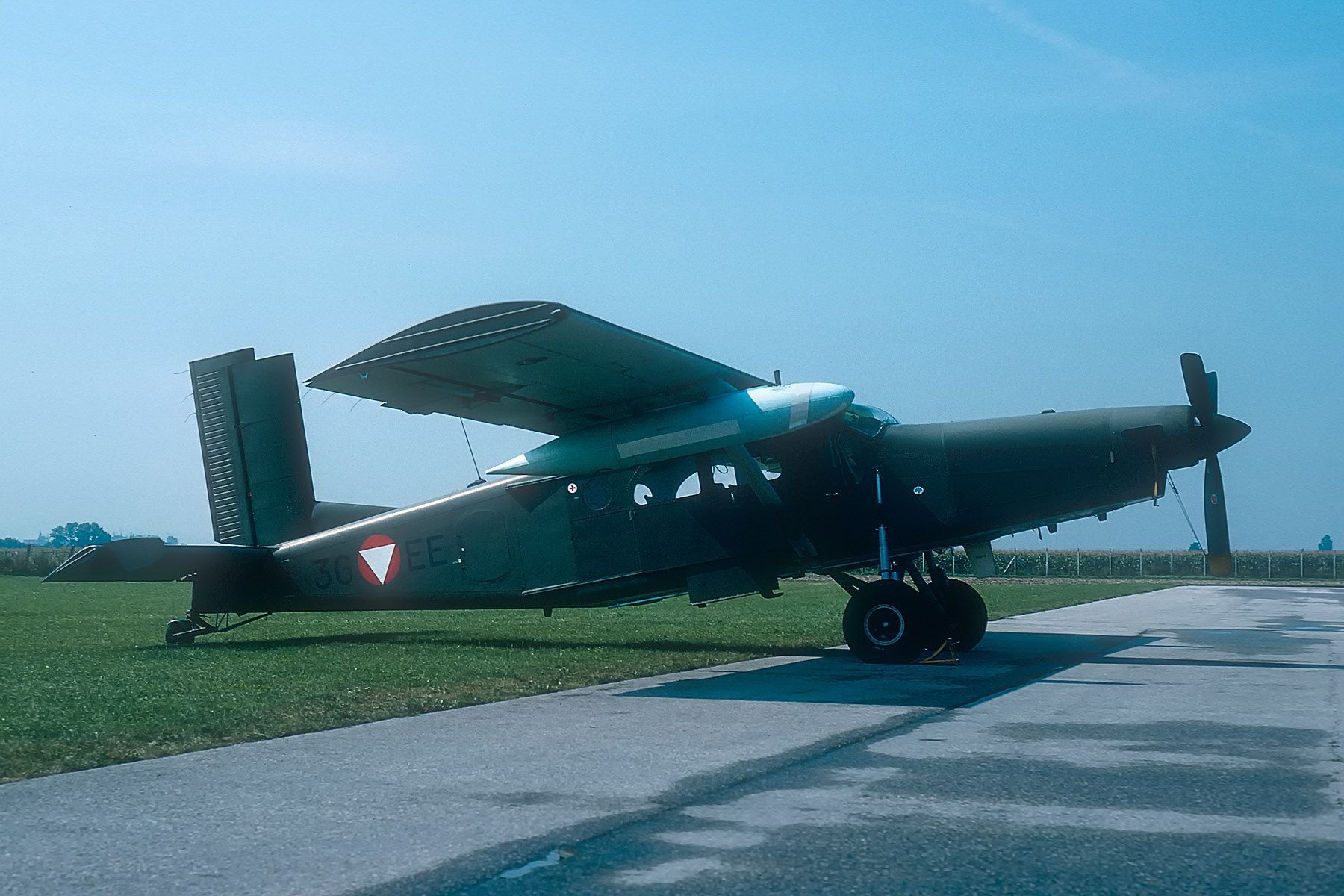
Turbo Porters
For lighter transport and liaison duties within its borders, Austria’s air arm has eight Pilatus Turbo Porters available. In 1976/77, twelve of these short-field capable PC-6/B2-H2 aircraft were delivered. After one was written off due to a tragic accident on 27 June 1984 killing all seven occupants, a replacement was bought and delivered in 1986. Another one was added to the fleet in April 2004. This PC-6/B2-H4 previously operated with the Bundesamt für Eich- und Vermessungswesen (Federal Office of Metrology and Surveying). Five PC-6s were transferred to RUAG in Switzerland in 2012, selling these onto the civil market.
The eight remaining PC-6s form the Flächenstaffel (Fixed Wing Squadron) at Fliegerhorst Leopold Figl – Flugplatz General Pabisch at Langenlebarn. This base was known as Fliegerhorst Brumowski since 1967, but renamed on 15 May 2024. The Turbo Porters have a wide range of tasks. Beside the mentioned transport and liaison flights, they also carry out banner towing for ground-based anti-aircraft gunnery training; photo mapping, medical evacuation and transport flights; dropping parachutists; and aerial firefighting. For mountain operations, skis can be mounted onto the landing gear. The Flächenstaffel is part of the Langenlebarn-based Luftunterstützungsgeschwader (Air Support Wing). On their turn, this wing reports to the Kommando Luftunterstützung at Fliegerhorst Vogler, Linz-Hörsching.
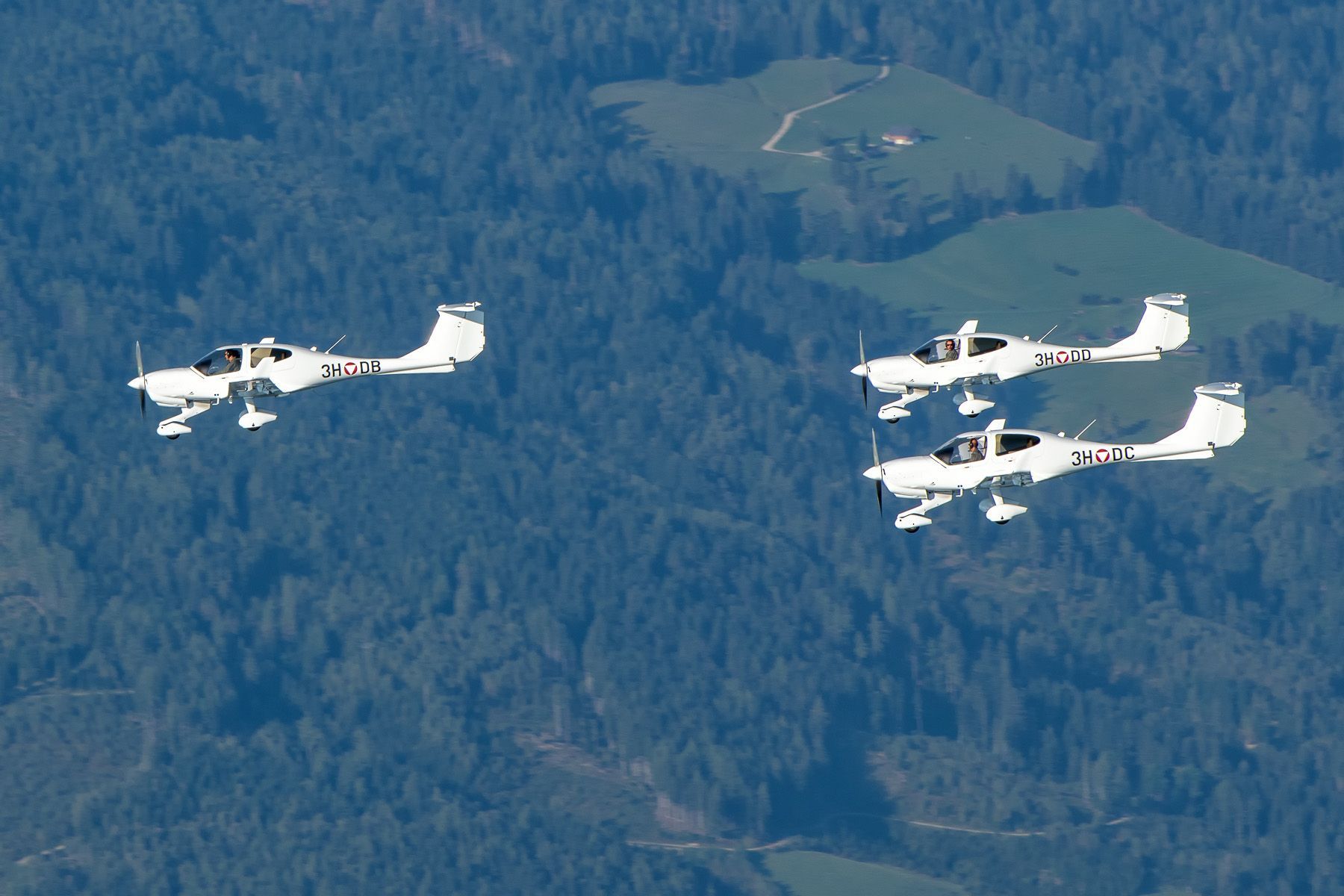
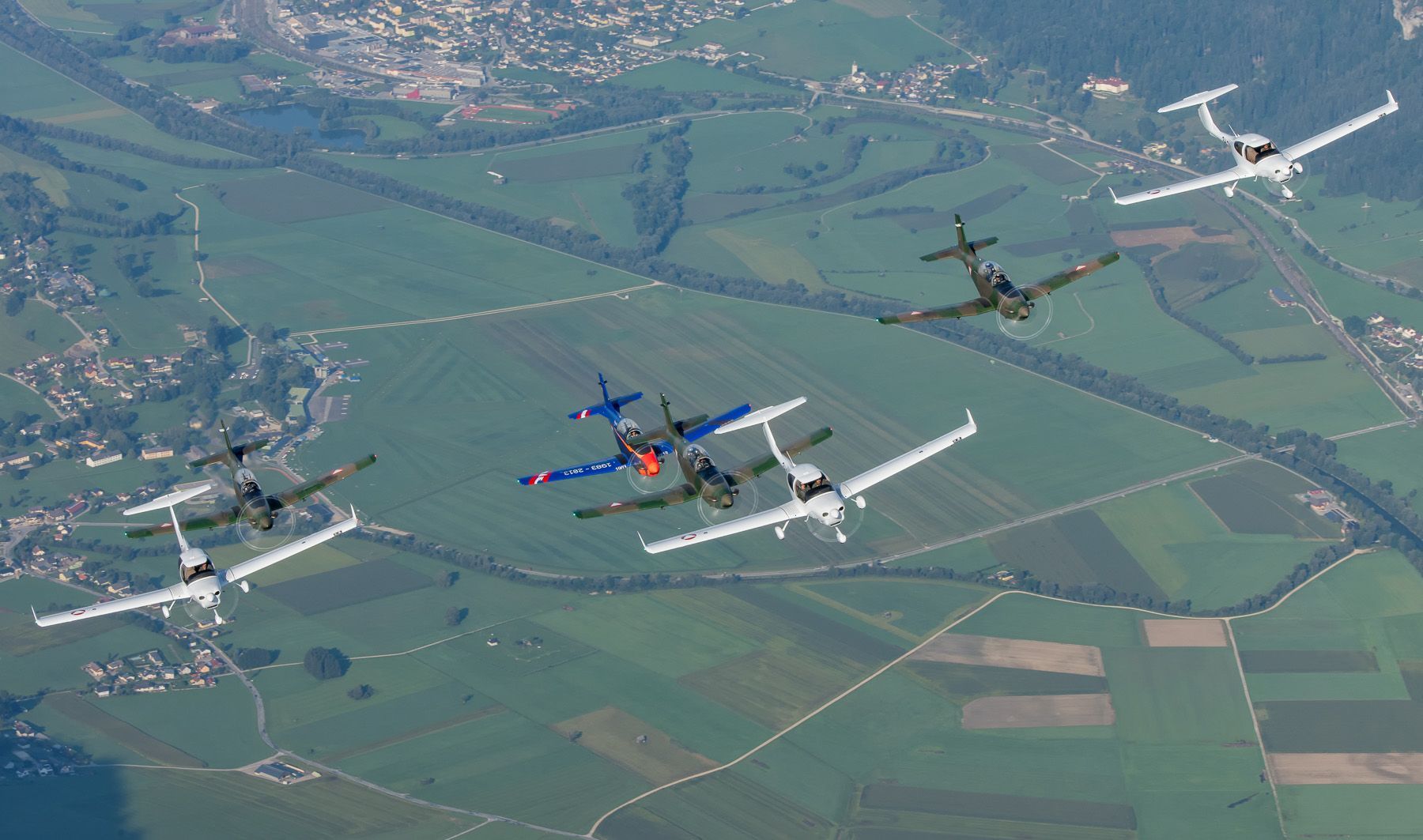
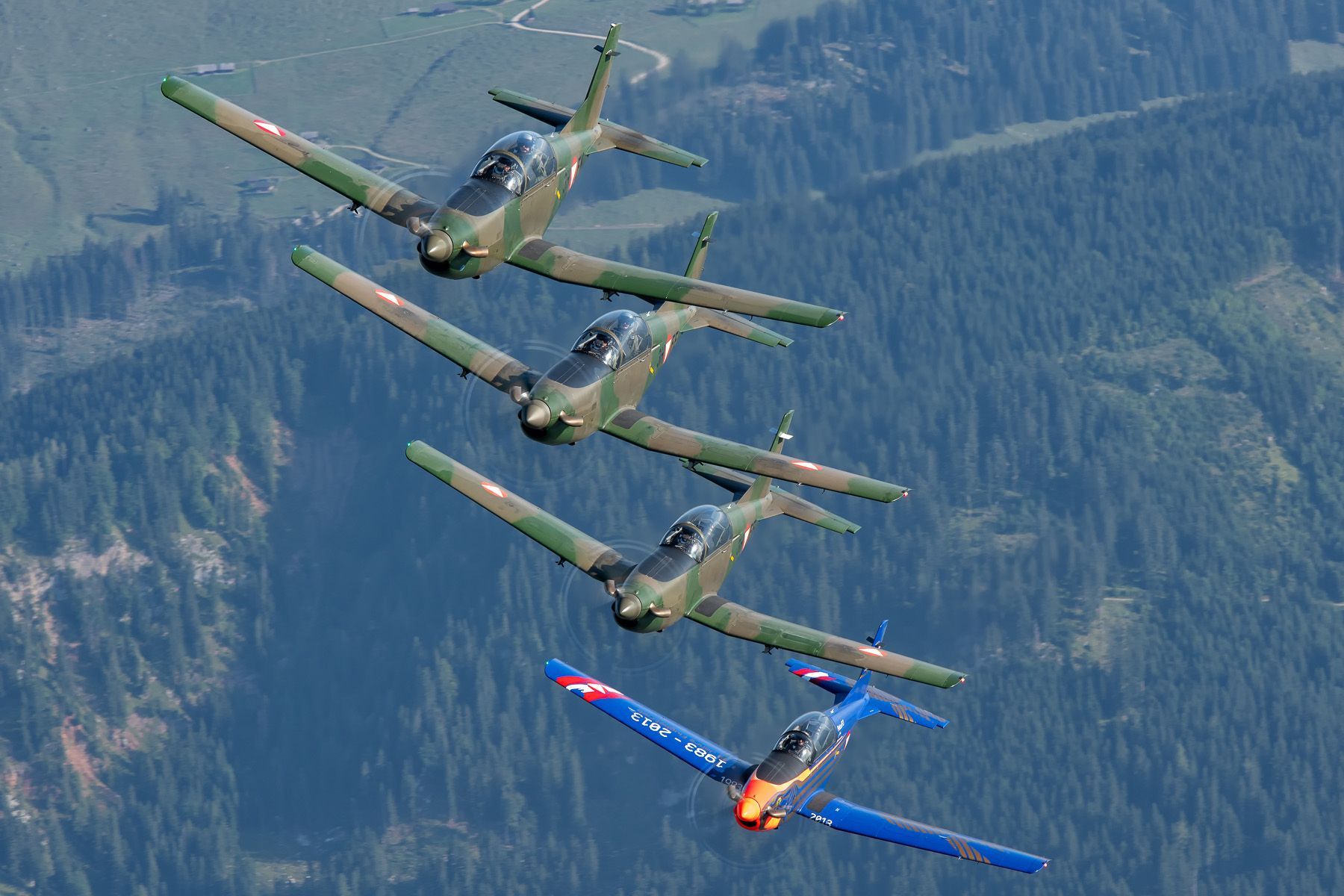
Crew selection and training
Within the Austrian armed forces, the Institut Flieger (Pilot Institute) is responsible for the training of both military pilots and new flight instructors. Alongside other training units, the Institut Flieger is part of the Flieger- und Fliegerabwehrtruppenschule (Aviation and Air Defence Troops School) that is based at both Zeltweg and Langenlebarn.
When applying for a flying job with the Austrian air force, those that successfully entered the Phase I selection phase will fly the Diamond Aircraft Industries DA40 NG. The first two of four ordered arrived at Zeltweg on 3 May 2018 and the second pair followed in September 2018. Beside pilot selection, the DA40s are also used for IFR training since these are relatively cheap to operate. The aircraft was selected for its easy and forgiving flight characteristics. Furthermore, the Austro Engine AE 300 that powers the aircraft requires Jet A-1 fuel like the rest of the Austrian air force fleet, so no need to stock another type of fuel.
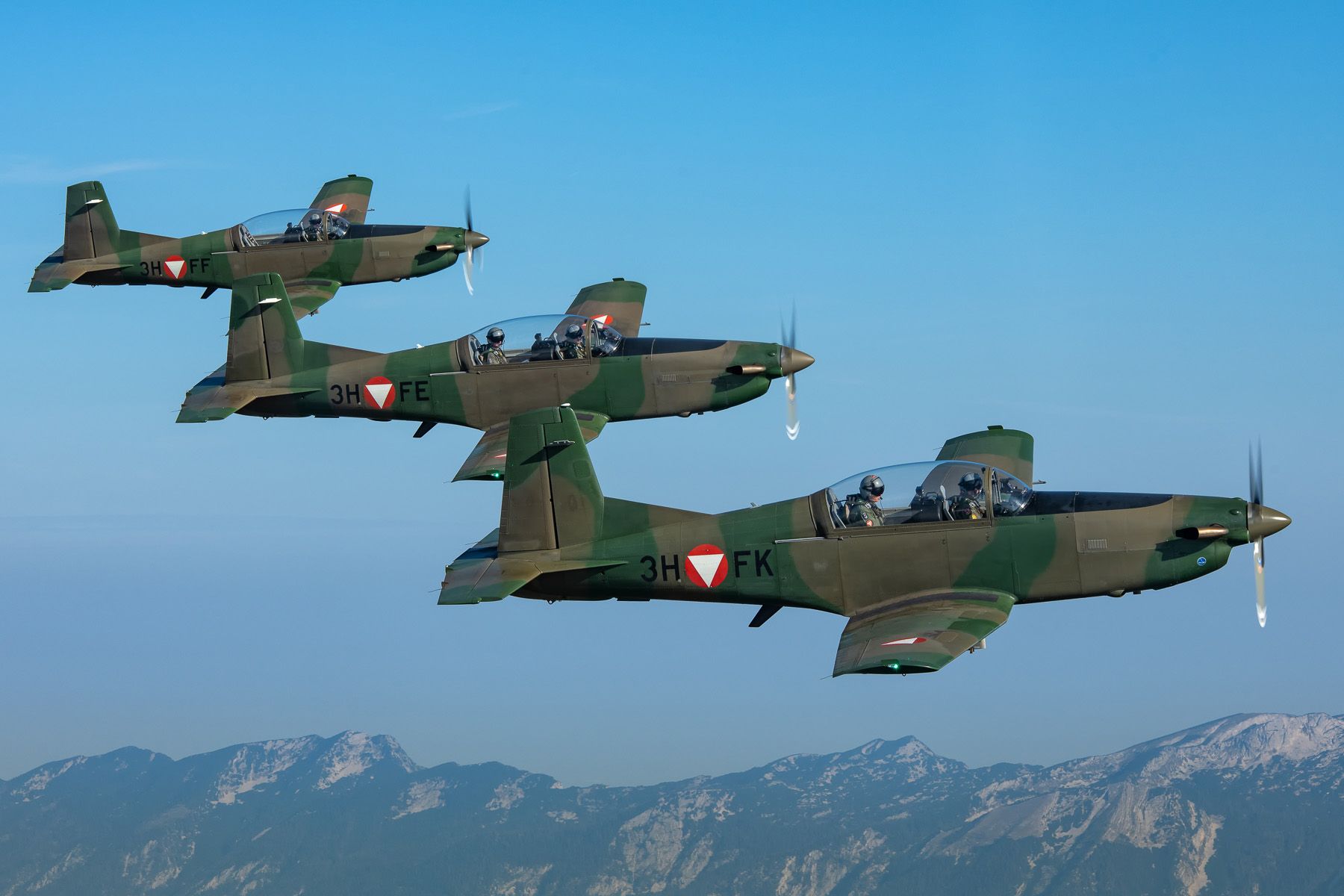
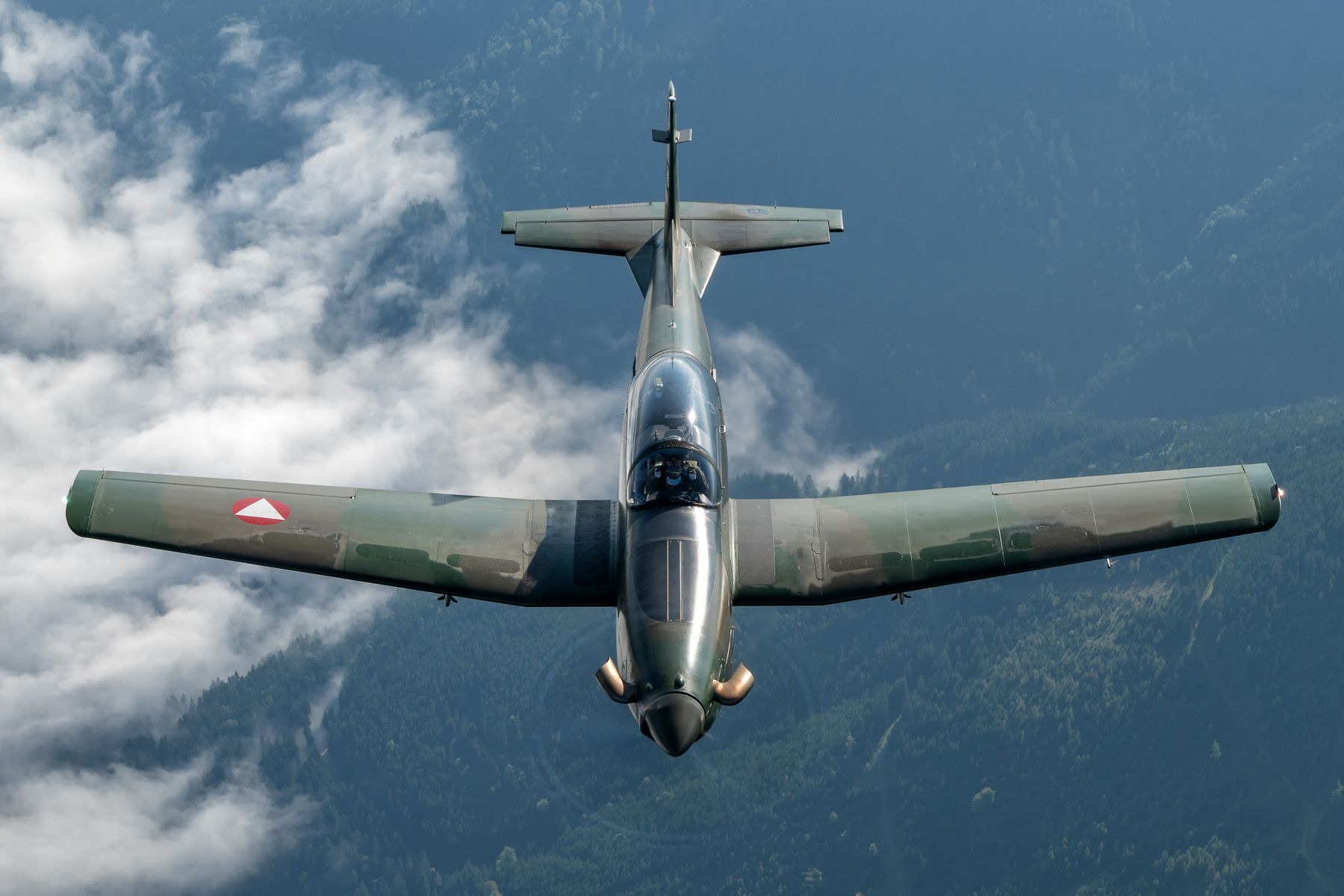
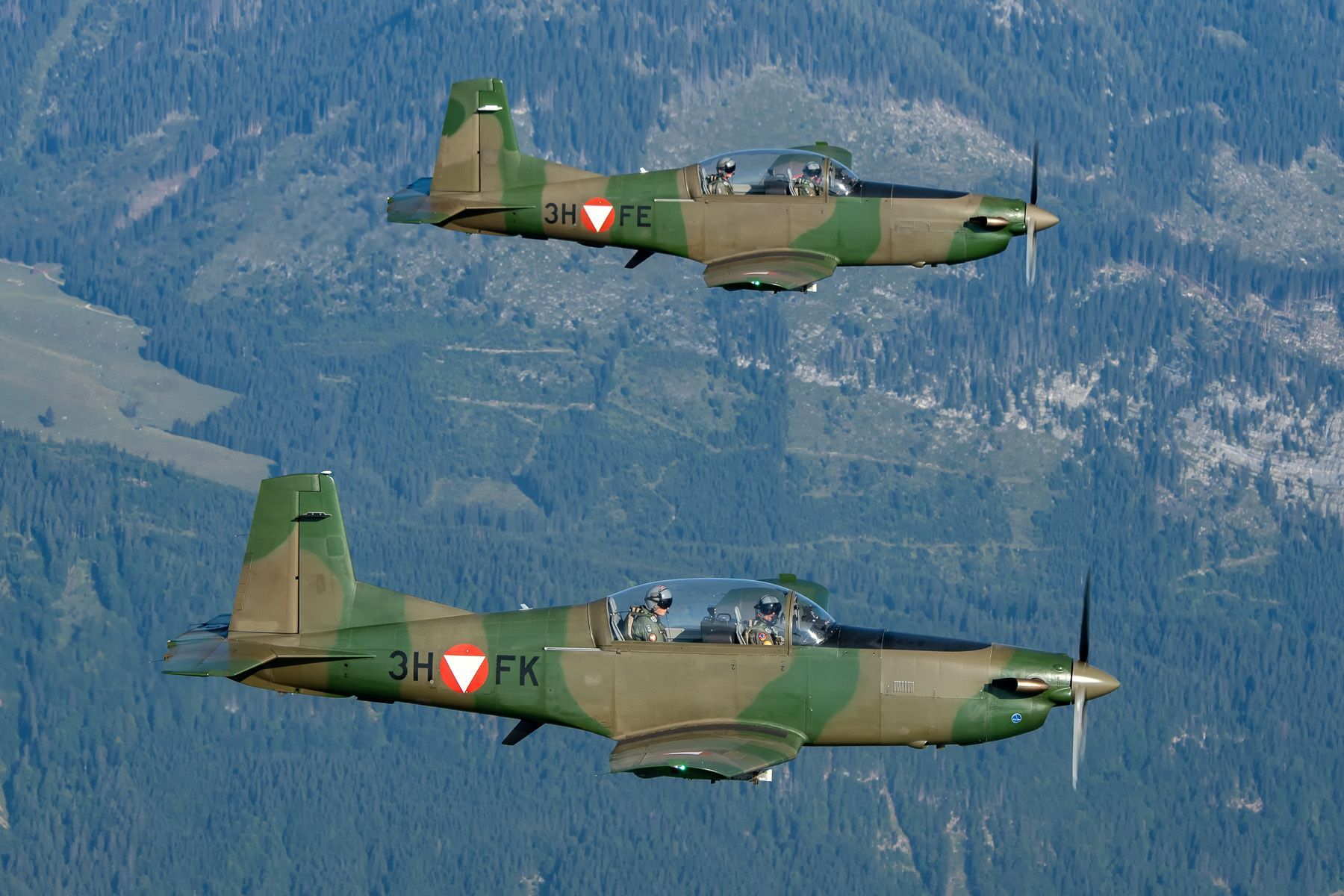
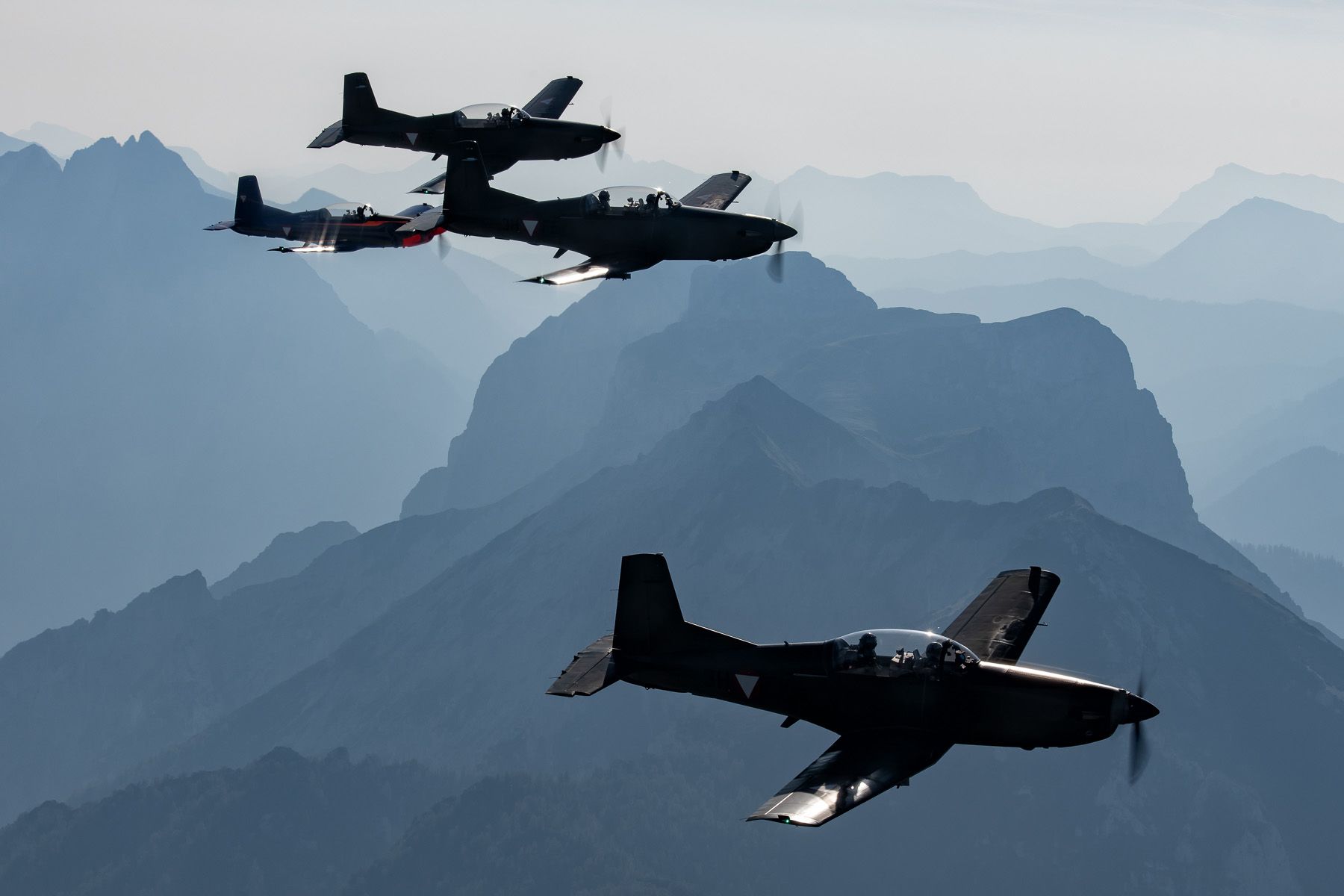
Armed PC-7s
The next steps in the career of future military pilots are the Phase II/III basic and advanced flying courses, both carried out with the Pilatus PC-7 Turbo Trainer. Initially, ten were ordered in 1982 with deliveries starting in January 1984. Another six were acquired in 1985. Twelve are still in service. One was involved in a landing accident at Punitz on 11 April 2012. Damaged significantly, it was withdrawn from flying service and now serves as a ground instructional airframe. Three PC-7s were sold onto the civil marked in 2014 due to a decreased demand in training.
For the advanced part of the syllabus, the PC-7s can be fitted with two podded 12.7mm machine guns and two LAU-7 dispensers each containing seven 70mm unguided rockets. While being armed, the PC-7s can fulfil a secondary role in aerial surveillance against slow-moving intruders.
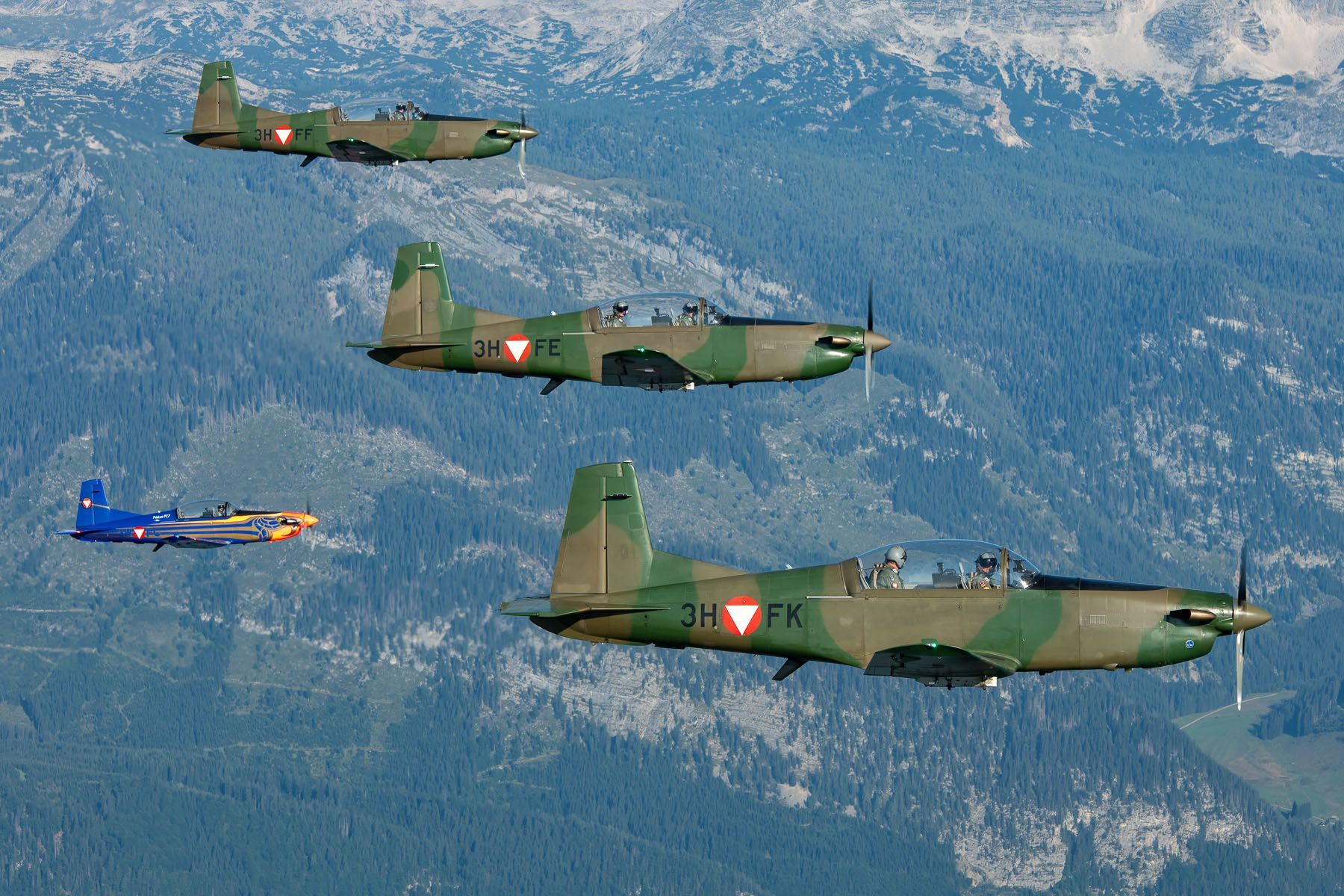
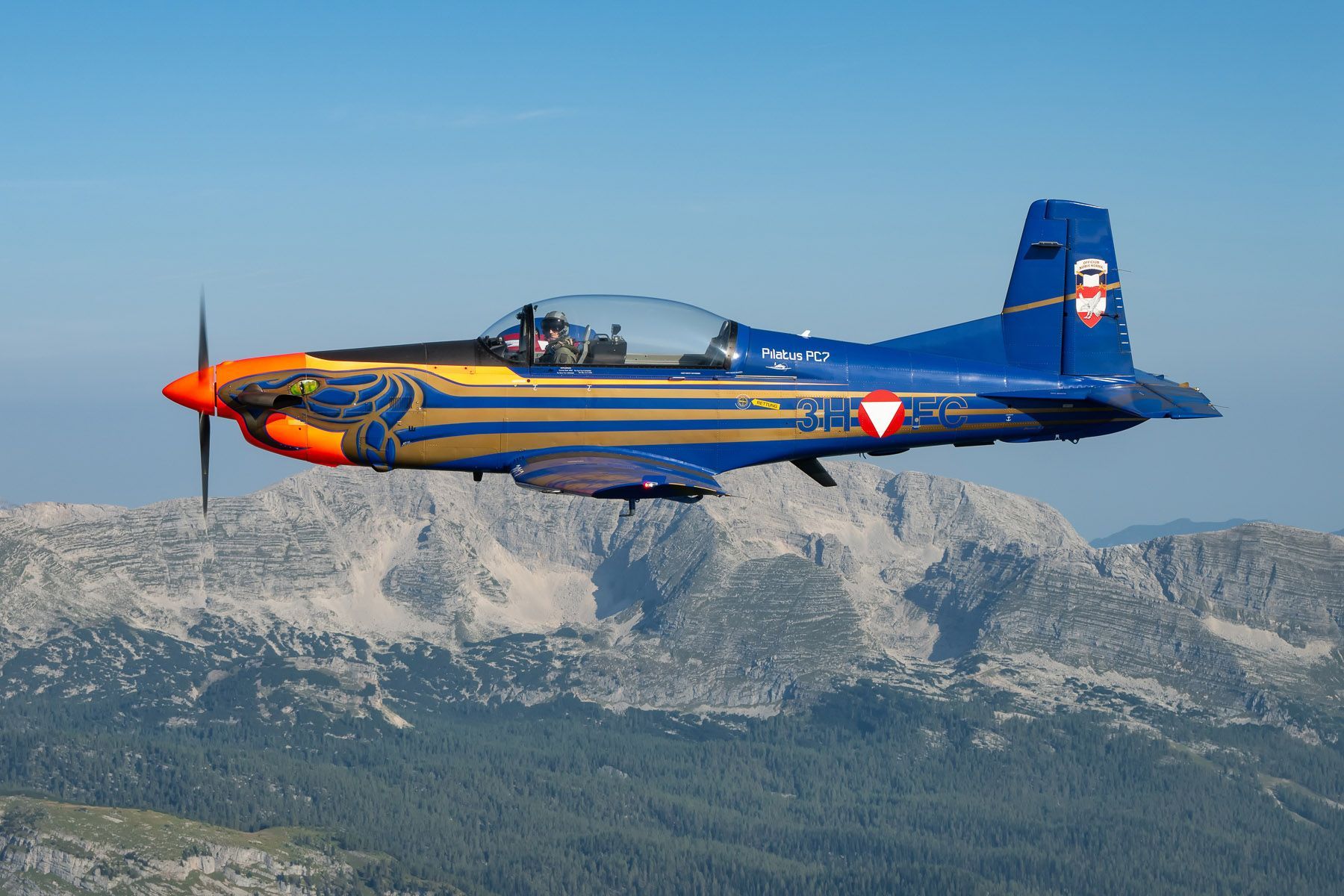
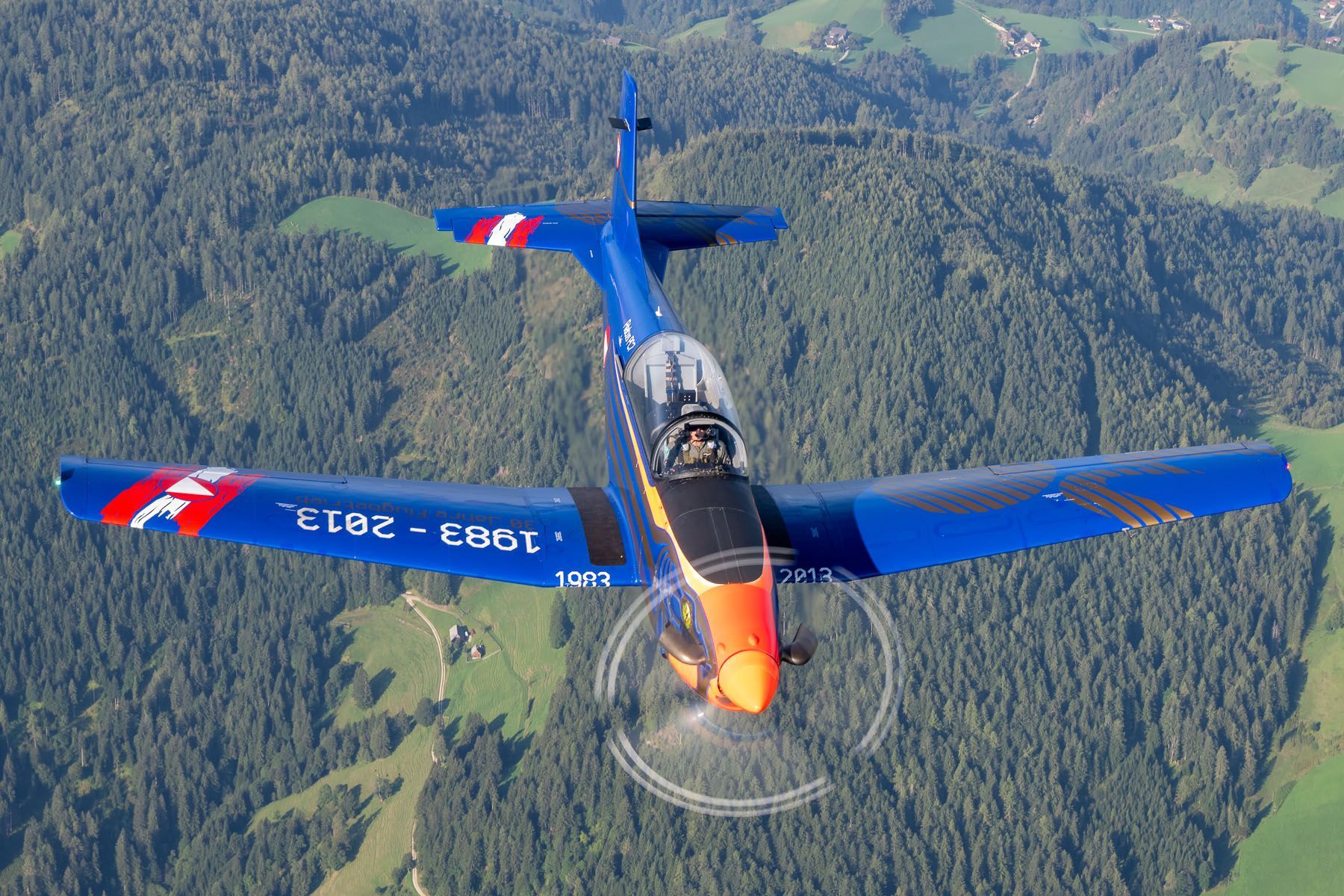
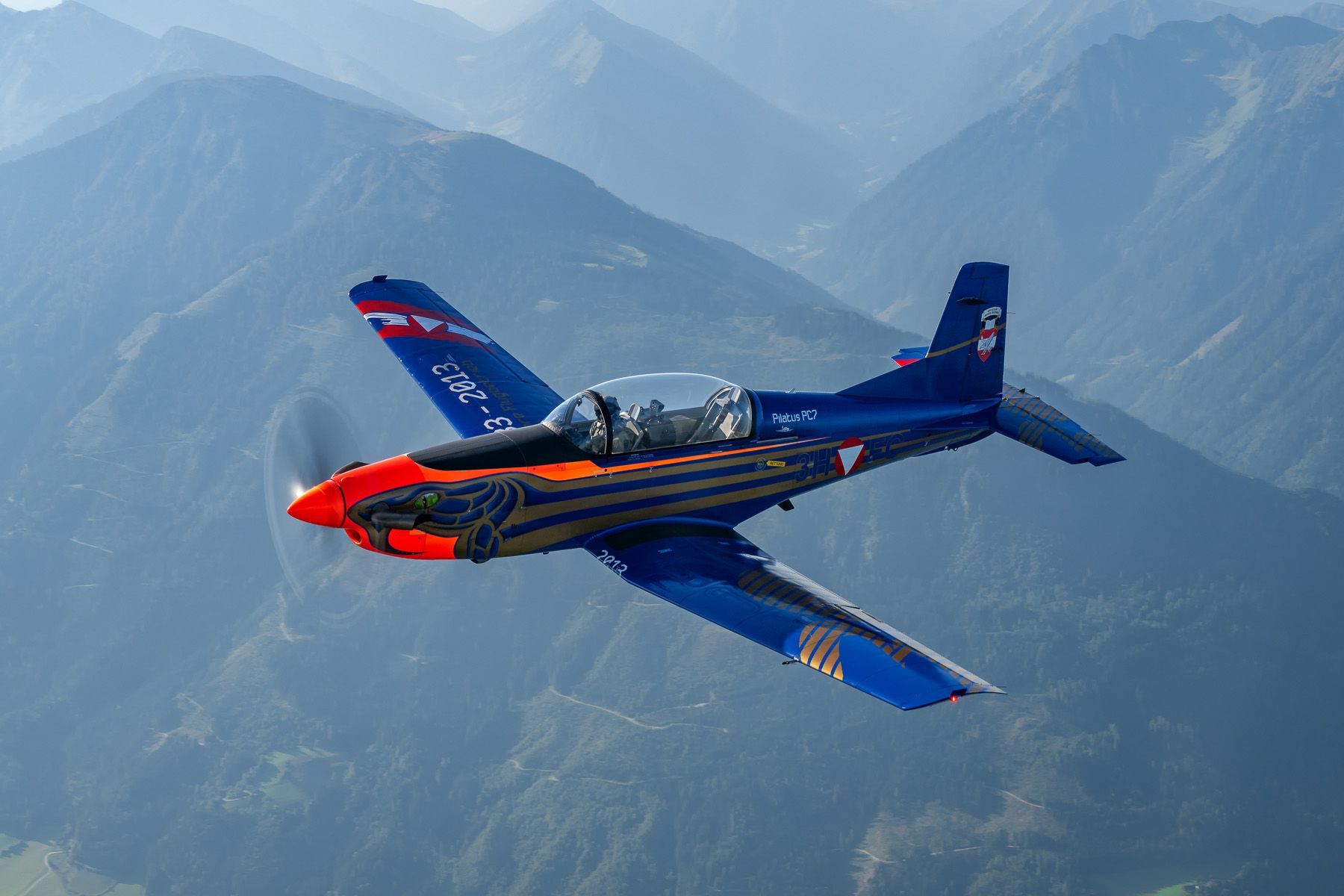
Saab 105 gone, new trainer sought
For half a century, advanced pilot training was centred around the Saab 105Ö, of which 40 were delivered from 1970. While also performing operational duties ranging from air policing to aerial reconnaissance, these aircraft were designed mainly for crew training. With the ejection seats removed, it could even be used for liaison flights carrying three passengers alongside the pilot. Finally, the Austrian demonstration team ‘Karo As’ was a well-known participant in the airshow circuit during the 1970s and 1980s, and at a later stage a Saab 105Ö wearing tiger markings made many appearances at such events.
With the arrival of the Saab J35Ö Draken in the late 1980s, the air policing task of the 105 was largely dropped. Crew training would remain one of the main tasks, until the last aircraft was retired from service in 2020. This left the Austrian air force with a gap in the flight training programme. Advanced flying training has since been done in Italy, where pilots that graduated on the PC-7 course are now joining the Phase IV/Lead-In Fighter Training of the International Flight Training School at Decimomannu. The IFTS was established in 2018 as a joint-venture between Leonardo and the Italian Air Force. The training centre operates 22 aircraft (four Leonardo M-346 Master trainers supplied by the manufacturer, and 18 T-346A allocated by the Italian Air Force). Several air arms have joined this establishment recently including Italy, Canada, the UK, Saudi-Arabia, Qatar, Singapore, Japan and Sweden.
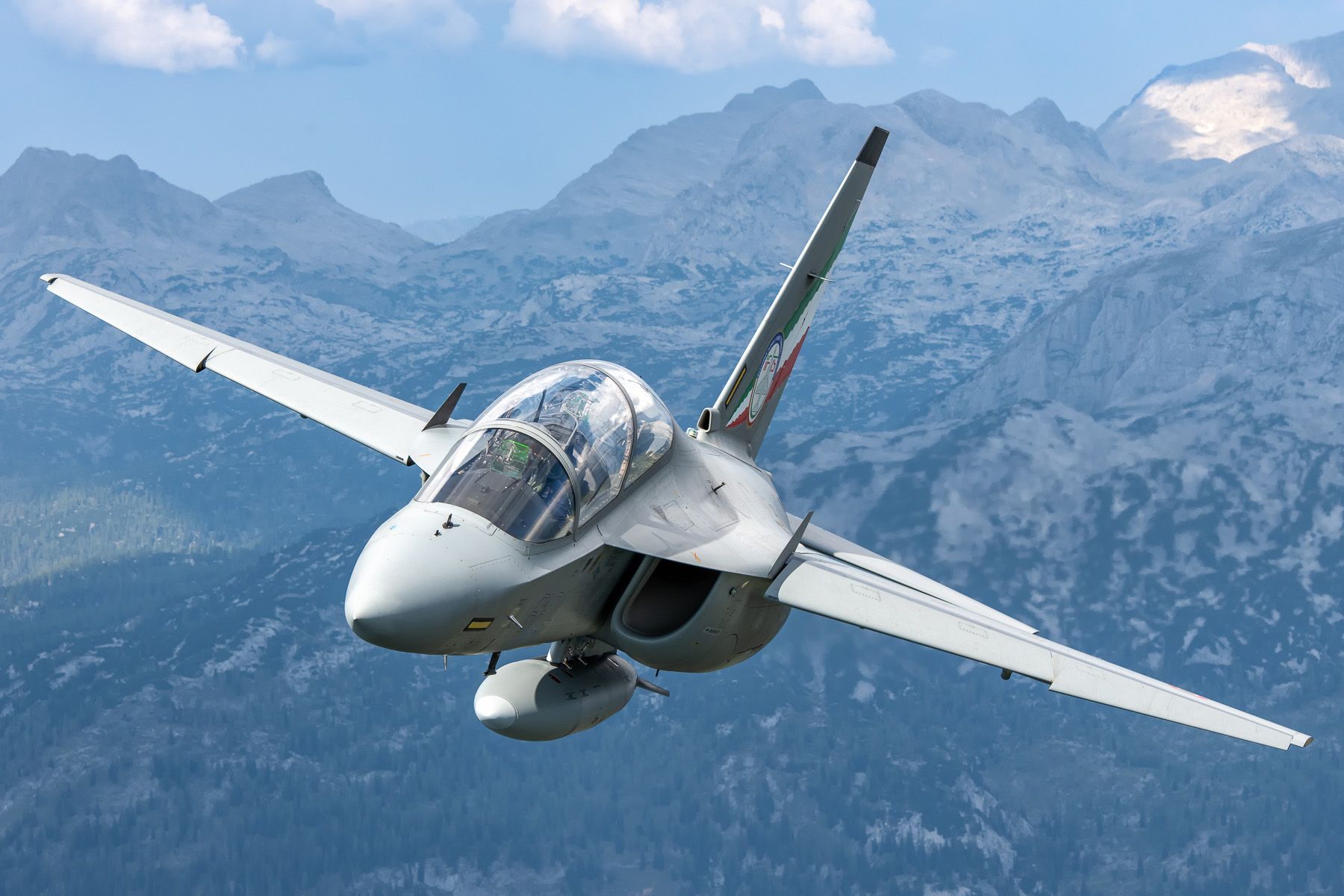
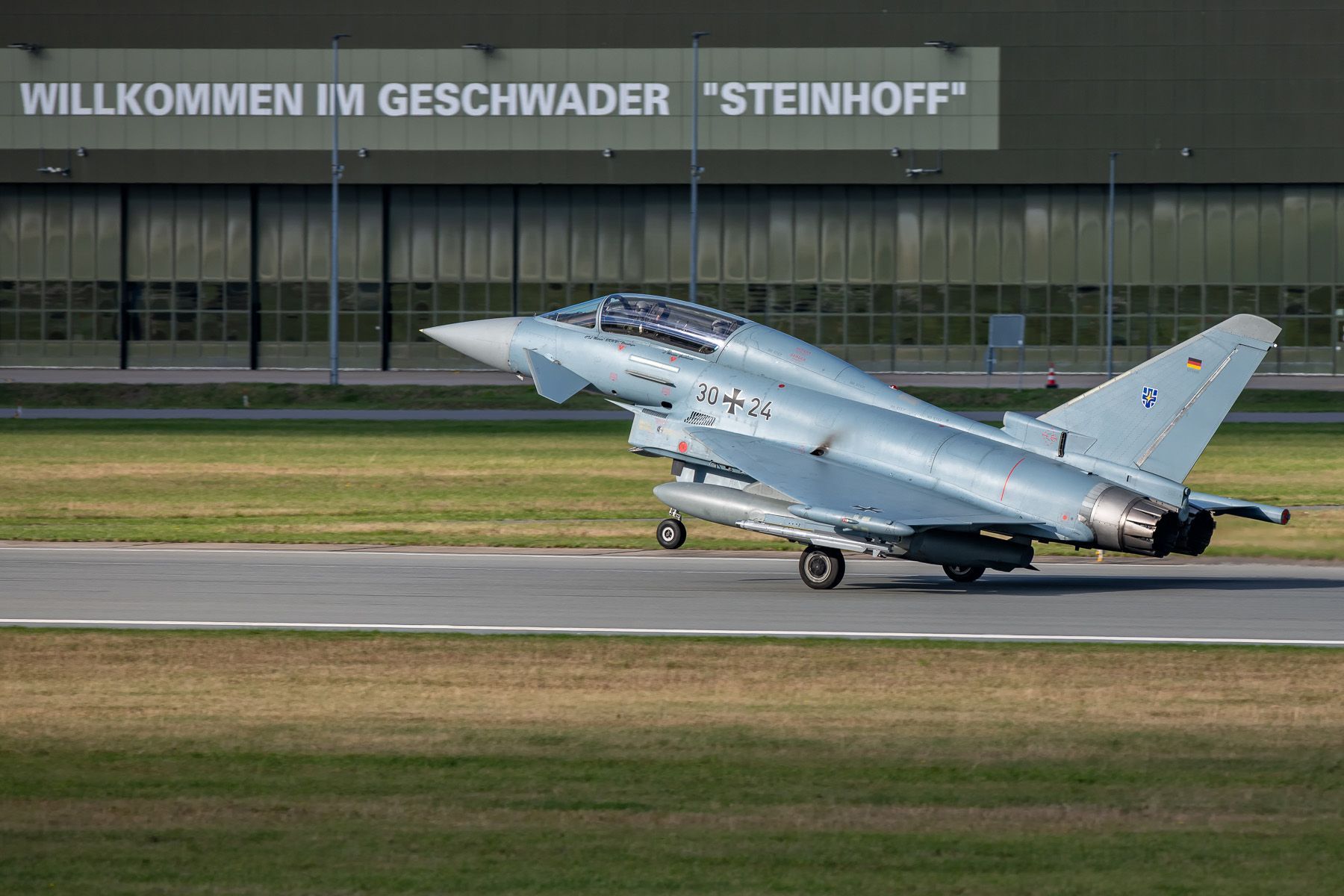
Eyes on Leonardo's M-346FA Master
For the operational conversion course to the Eurofighter, pilots graduated from the IFTC join the Taktisches Luftwaffengeschwader 73 ‘Steinhoff’ at Laage, Germany. This unit still operates a number of Tranche 1 dual-seat Eurofighters which resemble the same standard as the Austrian ones. However, these will soon be replaced with Tranche 4 aircraft, and the last old examples are expected to retire by 2028.
The lack of an own advanced training system, in combination with the relatively high costs of acquiring training slots abroad, has lead to a study to re-establish this competence in-house. Following the Russian invasion in Ukraine in 2022, Minister of Defence Klaudia Tanner announced that additional budget will be made available to the armed forces. Part of this would be allocated to the new trainer aircraft acquisition. More specifically, the Ministry of Defence is looking to buy some 12-15 Leonardo M-346FA aircraft. This so-called Fighter Attack variant is capable to do light combat missions as well. If bought, the M-346 would be regarded as the ultimate replacement for the earlier retired Saab 105Ö. Although limited, it would also reinstate the air arm’s air-to-ground capability, since their Eurofighters are solely suited for air defence. The possible procurement would result in the establishment of an advanced jet trainer/fighter attack squadron, likely controlled by the Überwachungsgeschwader. ■
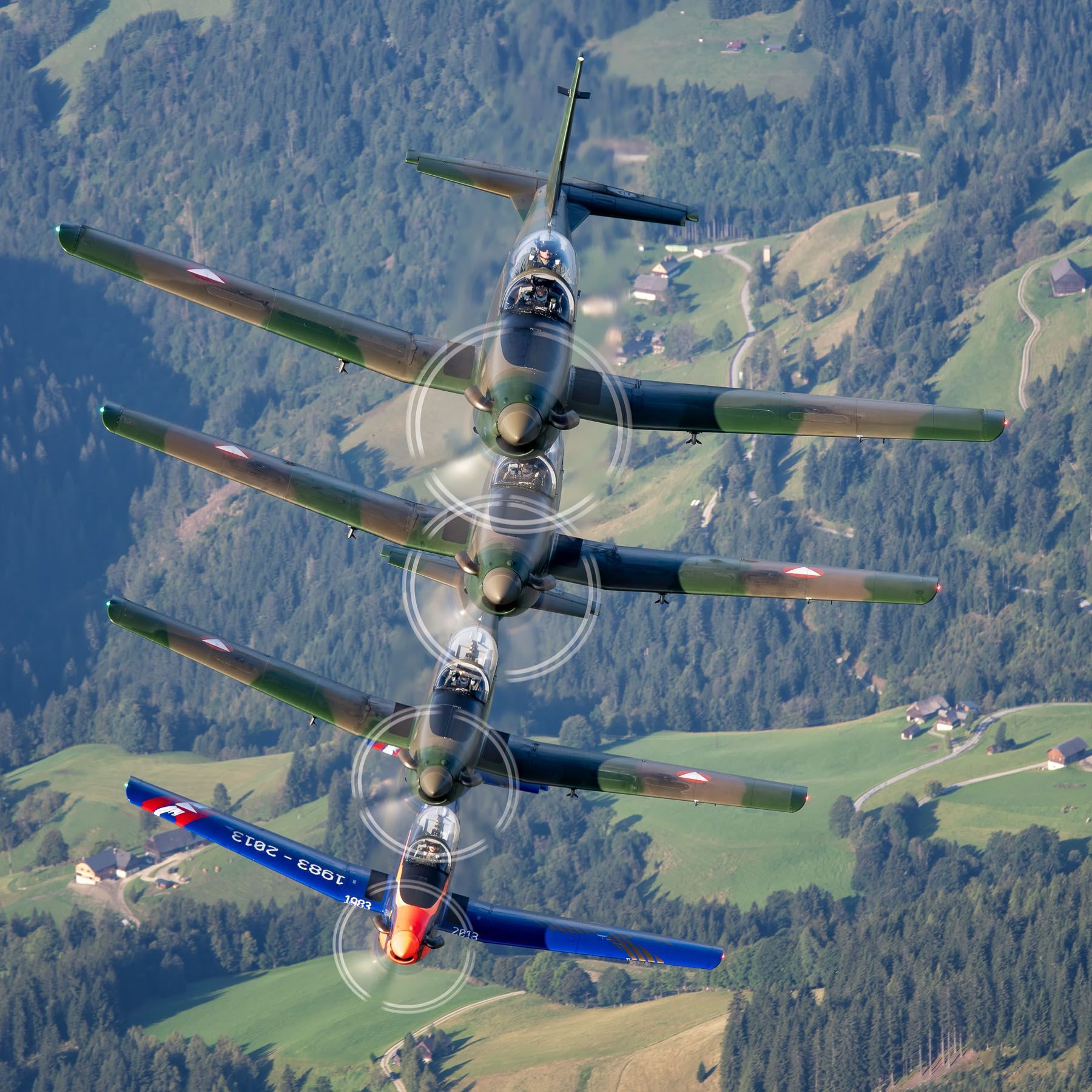
A brief historical overview on Austrian transport, liaison and trainer aircraft
A number of light liaison aircraft has seen service with the Austrian air force. These include six De Havilland Canada DHC-2 Beavers operated between 1960 and 1976, and 29 Cessna L-19A/E Bird Dogs. These spotter planes had a long career in Austria, as the first ones entered service already in 1958 with the last one retiring in 1997.
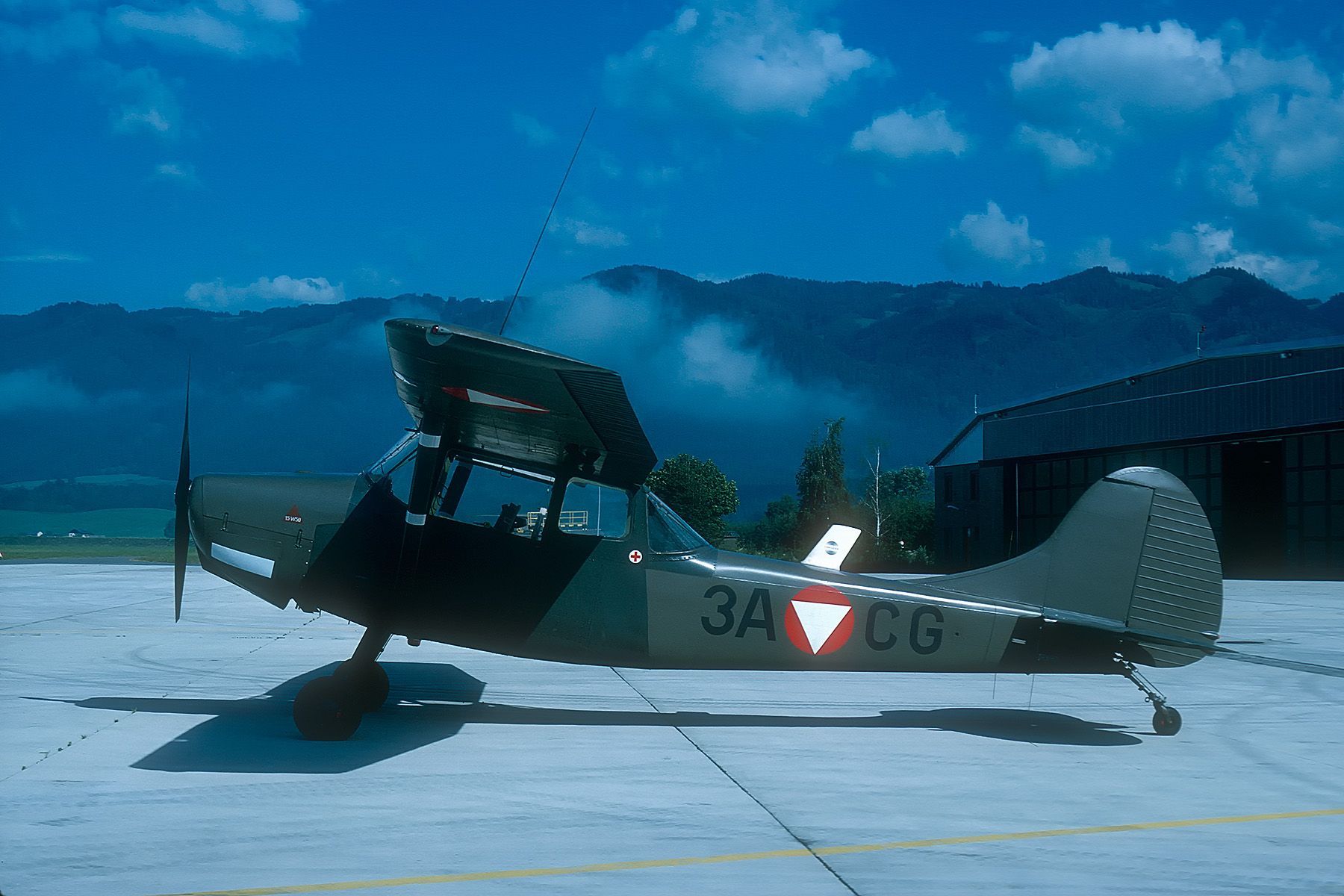
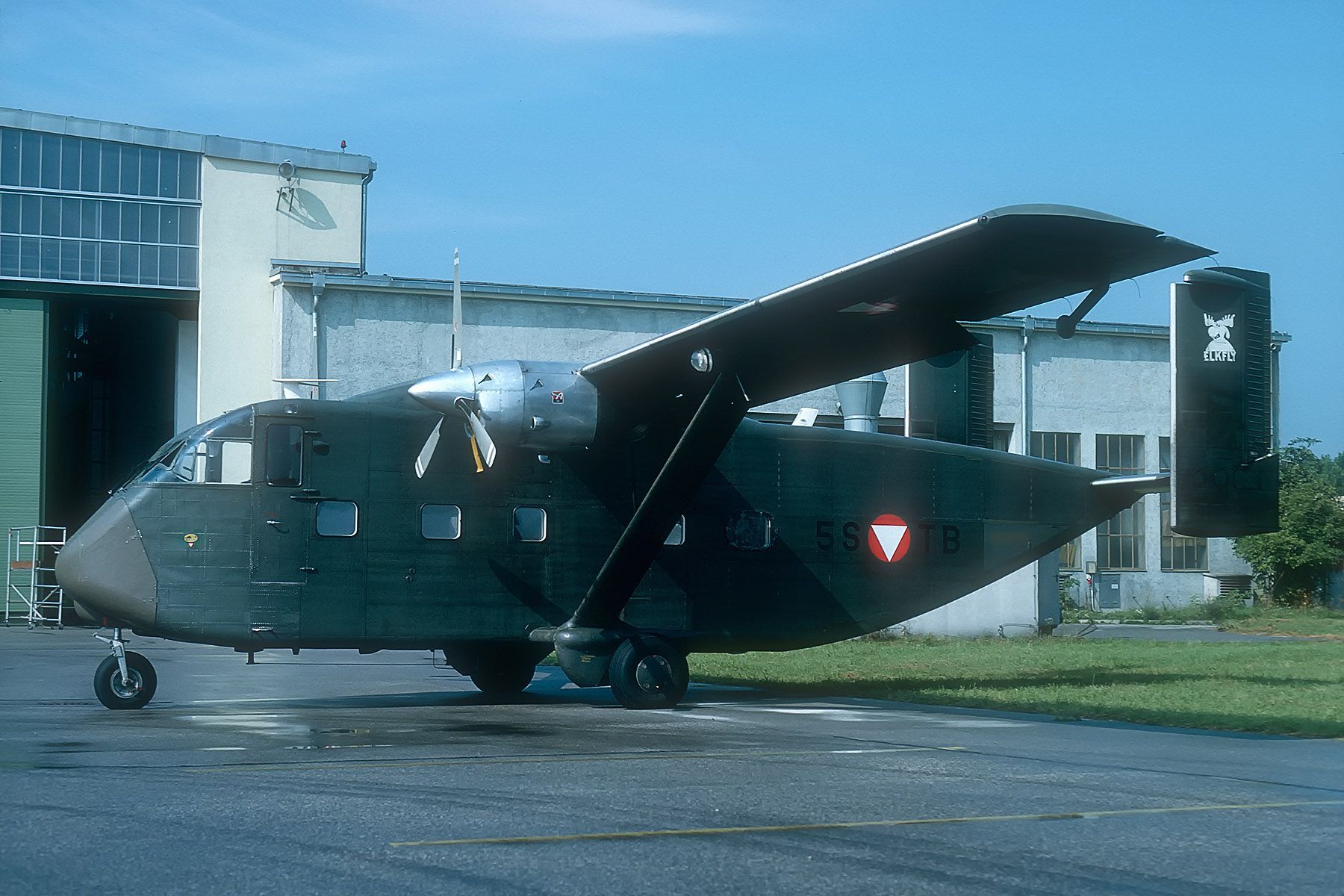
Following the arrival of the two Short SC.7 Skyvan 3M transports in 1969, the Austrians finally added some airlift capacity, although limited. While waiting for the ex-Royal Air Force Hercules, a single CASA/IPTN CN235-300 was leased from April 2000 till March 2002.
The list of former Austrian air force trainer aircraft is more extensive. Following the establishment of the armed forces after the Second World War, the Soviets supplied four Yakovlev Yak-18 (NATO code name ‘Max’) in 1955, followed by a quartet of Yak-11 (‘Moose’) one year later. Four Czechoslovak Zlin 126 Trener aircraft were taken on charge in 1957.
Having gained experience with these piston-engined aircraft, the air force entered the jet age with the arrival of the De Havilland DH.115 Vampire. Nine of these partly wooden twin-boom aircraft – four T.11s and five T.55s – joined the air force in 1957, followed by 18 Fouga CM170 Magister V-tailed jet trainers in 1959.
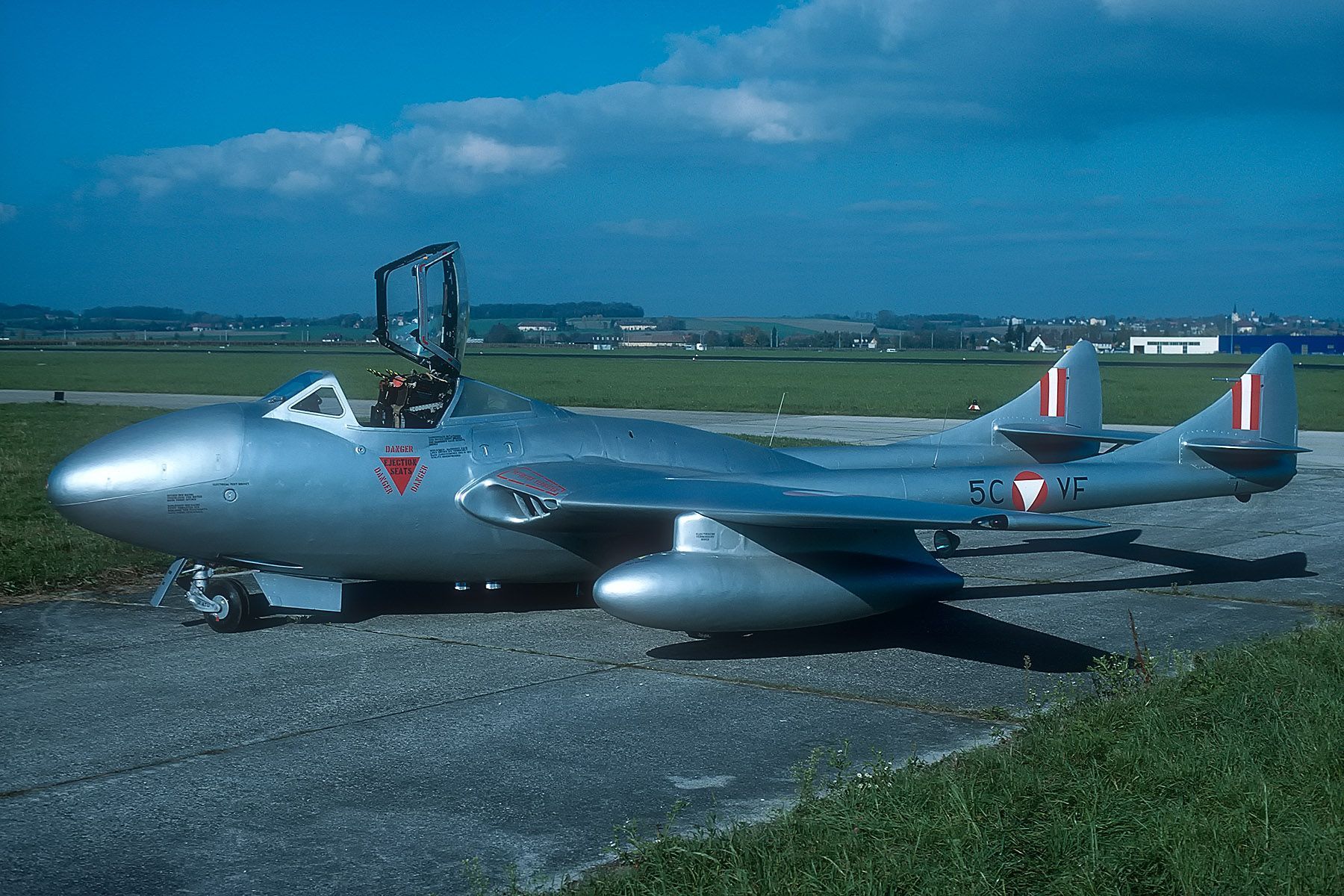
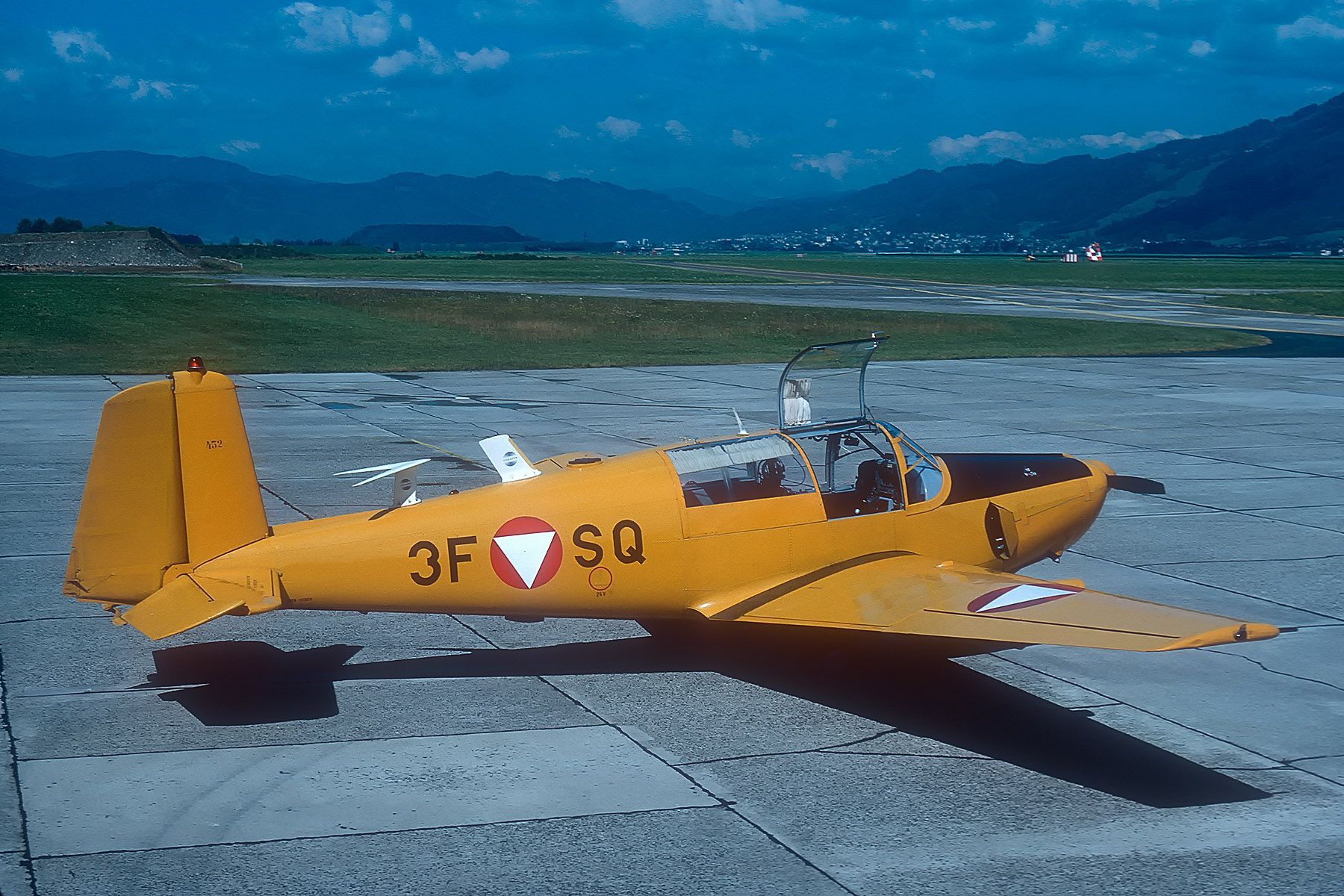
The earlier Warsaw Pact propeller-driven trainers were supplemented by ten North American LT-6G Texans from 1959, and with the arrival of 24 Saab 91D Safir aircraft in 1964, the remaining Eastern European trainer aircraft were retired. The Safir would become the main basic training platform after the last Texans had left in 1971, and in 1972 also the Vampires and Magisters were withdrawn from service following the arrival of the Saab 105Ö armed trainers. The flying training system was now solely equipped with Swedish aircraft.
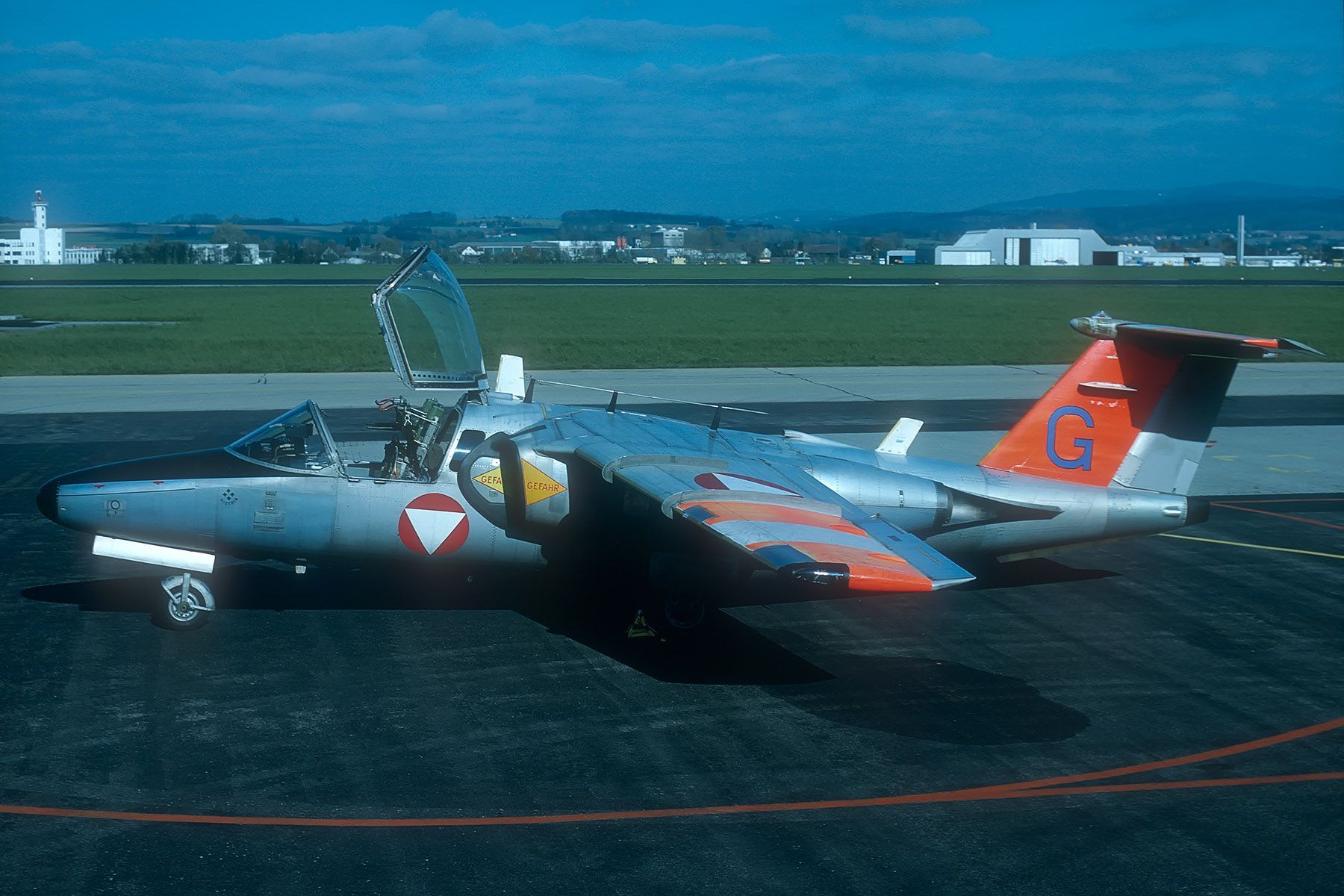
Although the first Pilatus PC-7s arrived in 1984, the last Saab Safir was not retired until 1993. However, during the last years of service, these mainly served for liaison duties. ■
